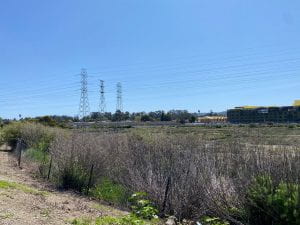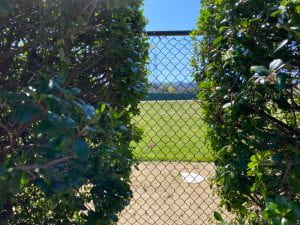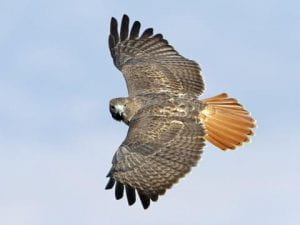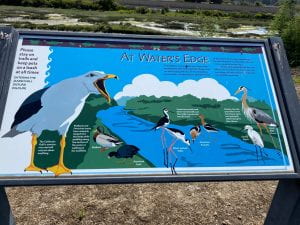Date: Friday, April 3, 2020
Location: Burlingame, CA (37.59181, -122.35781)
Site description: For this week, my brother and I went down to Burlingame and spent an hour walking along the bay before heading to a park across the street. We walked along an empty, concrete trail next to the shore, but we were unlucky with seeing anything but some gull species in the distance. The area was open and had a few trees and patches of flowers, and it was slightly elevated compared to the rocky, shallow shore area below it. We decided to walk to the park across the street, which had lots of shrubs and open grass fields. There was also a large wetland area by the freeway that we came across, which we learned from a sign was called Sanchez Marsh. The sign had said that the area had undergone tremendous destruction, contamination, and alteration, which is reflected by the aviation population declines. Some keys species that I saw during this trip were the Common Raven, Dark-eyed Junco, White-crowned Sparrow, and Anna’s Hummingbird.
Species account: A species I came across this week was the Red-tailed Hawk (Buteo jamaicensis). They belong to the order Accipitriformes and family Accipitridae. This was a species I was very familiar with because we saw them quite often during our field labs. This species is very common, as you can find them occupying just about every open habitat in the continent. I first saw this bird as it came over the hilltop, and it was flying relatively low to where I was so I was able to see its colors and flight pattern very well. It was circling the top of the hill, when an American Crow started flying super close to it–almost like it was getting ready to swarm it from above. This is normal for this species–circling high over open areas, soaring and barely flapping their wings. Its reddish-orange tail and pale underparts is what made it very distinguishable from just one look. They are large hawks with broad, long wings and a wide, fan-shaped tail. Their diet consists primarily of mammals, including voles, mice, wood rats, rabbits, and ground squirrels. They also eat smaller birds, as well as snakes. This species typically nests in tall trees and cliff ledges where they have a great view of the landscape before them. In regards to behavior, they can be aggressive when defending territory or nests and will chase off other species.
Picture to the right is the American Crow flying above the Red-tailed Hawk.
Narrative: The weather during my time outside was pretty windy and the skies were clear, free of any clouds. I started my trip along a trail by the shoreline, hoping to see some shorebirds, but unfortunately, I didn’t see anything but a few gulls. When we moved over to the park/marsh area, I saw a lot of species that we’ve come across before. In particular, there were lots of White-crowned Sparrows and I could hear them calling out to each other because the park trail was very quiet and there was nobody else there. When we came across the marsh area, there were signs displaying birds you can expect to see in the area, which included species like American Avocets and Black-necked Stilts–two species I’ve never seen before. Unfortunately, the marsh had NO birds but one Canada Goose (pictured below).
It was pretty disappointing because I thought it was a great area for a variety of species. I recalled the sign had said, “the tremendous destruction, contamination, and alteration of this habitat from ever expanding urban development is reflected in dramatic avain population declines.” I think what contributed is that this marsh is wedged tightly between Highway 101 and the park, which is an example of a modification of a once-successful habitat.
eBird checklist: https://ebird.org/checklist/S66586877
Citations:
“Red-Tailed Hawk Life History, All About Birds, Cornell Lab of Ornithology.” , All About Birds, Cornell Lab of Ornithology, www.allaboutbirds.org/guide/Red-tailed_Hawk/lifehistory.








